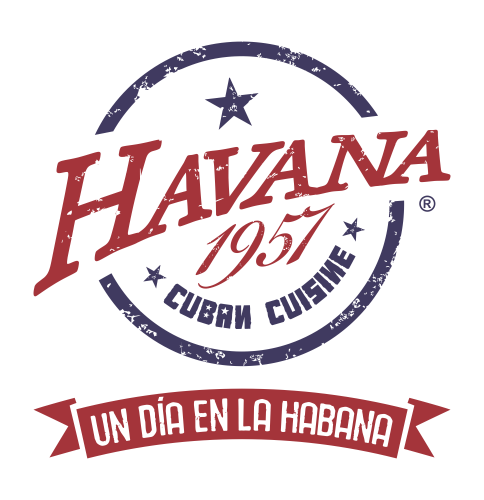Embark on a culinary journey through the vibrant flavors of Cuban cuisine, where the essence of mojo adds a spicy and aromatic touch to a variety of dishes. In this comprehensive guide, we’ll explore the magic of mojo – from its origins and typology to international variations, with a special focus on its importance in Cuban gastronomy. Join us as we delve into the rich history and irresistible appeal of mojo in Cuban cuisine, including its key ingredients, preparation methods, and where to enjoy dishes infused with this delicious sauce, such as at Havana 1957.
What is mojo?
Mojo, pronounced “MOH-hoh,” is a traditional sauce or marinade that originated in the Canary Islands and is widely used in Cuban cuisine. It is characterized by its vibrant citrus flavor, aromatic herbs, and garlicky base. Mojo serves as a versatile condiment that enhances the flavor of various dishes, adding a spicy and refreshing element that complements meats, seafood, vegetables, and more.
Types of Mojo Sauce: Criollo, Verde and Picón varieties
Mojo comes in several forms and variations, each offering a unique twist on the classic recipe. Common types of Mojo include
– Mojo Criollo: The most traditional, with a base of olive oil, sour orange juice, garlic, and spices.
– Mojo Verde: A green variety made with fresh herbs such as cilantro, parsley, or mint, mixed with garlic, olive oil, and vinegar.
– Mojo Picón: A spicy variation infused with chili peppers or paprika to add heat and depth to the sauce.
These variations showcase the versatility of mojo, allowing chefs to tailor the sauce to different palates and culinary preferences.
Cuban Mojo: The Signature Sauce of Cuban Cuisine
Although mojo originated in the Canary Islands, it has become an integral part of Cuban cuisine thanks to the island’s rich culinary heritage and cultural exchanges. In Cuba, mojo is a staple condiment that adds a burst of flavor to traditional dishes such as lechón asado (roast pork), yuca con mojo (yucca with mojo), and moros y cristianos (black beans and rice). Cuban mojo is typically made with sour orange juice, garlic, olive oil, and spices, creating a tangy and aromatic sauce that enhances the flavor of any dish.
Essential ingredients for authentic Cuban mojo
The main ingredients of Cuban mojo include
– Sour orange juice: Known as “naranja agria” in Spanish, sour orange juice provides the tart citrus flavor that defines Cuban mojo.
– Garlic: Fresh garlic cloves are crushed or minced to release their pungent aroma and flavor, infusing the sauce with its distinctive flavor.
– Olive Oil: High-quality olive oil serves as the base for Cuban mojo, adding richness and depth to the sauce.
– Spices: Common spices used in Cuban mojo include cumin, oregano, and black pepper, which enhance the flavor profile of the sauce.
How to Make Cuban Mojo: A Step-by-Step Recipe
Making Cuban mojo is easy and requires only a few basic ingredients. Here’s a traditional recipe for Cuban mojo marinade:
– 1 cup sour orange juice
– 6 cloves of garlic, minced
– 1/4 cup olive oil
– 1 teaspoon ground cumin
– 1 teaspoon dried oregano
– Salt and pepper to taste
- In a bowl, combine the sour orange juice, minced garlic, olive oil, cumin, oregano, salt, and pepper.
- Whisk the ingredients together until well combined.
- Use the mojo marinade to marinate meats, seafood, or vegetables before grilling, broiling, or frying for an authentic Cuban flavor.
Mojo-infused dishes in Havana 1957: A Taste of Cuba
At Havana 1957, you can experience the tantalizing flavors of Cuban cuisine infused with the essence of mojo. Indulge in dishes such as
– Masitas de Cerdo (Cuban fried pork): Crispy fried pork served with Cuban mojo (citrus onion sauce) and yucca chips.
– Tamal en Hoja (Corn Tamal): Spiced pork wrapped and cooked in a corn husk, topped with Cuban mojo (citrus onion sauce).
– Pan con Lechón (Pork Sandwich): Slow-cooked crispy pork belly, caramelized onions, mojo sauce and pickled red onions served on Cuban bread.
– Tradicional Cubano Bowl (Traditional Cuban Bowl): Roasted pork shoulder served with white or moro rice, Florida avocado, tomato, cucumber, pork rind and crispy plantain chips, topped with Cuban mojo (citrus onion sauce).
Each dish offers a symphony of flavors that celebrate Cuba’s vibrant and diverse culinary heritage.
Havana 1957 Locations: Where to Experience Authentic Cuban Cuisine
Experience the authentic taste of Cuban cuisine at Havana 1957 locations, where you can savor the tantalizing flavors of dishes infused with mojo. With locations in Pembroke Pines, Española Way, Lincoln Road, Ocean Drive and the Breakwater Hotel, there’s always a convenient spot to indulge in the rich and aromatic delights of Cuban cuisine.
More than just a sauce, mojo is a culinary tradition that embodies the vibrant flavors and cultural richness of Cuban cuisine. From its origins in the Canary Islands to its widespread popularity in Cuba and beyond, mojo has become a beloved condiment that adds spice and flavor to a wide variety of dishes. Whether enjoyed at home or in Havana 1957, the essence of mojo invites you to savor the authentic taste of Cuba with every bite. Cheers to the irresistible allure of mojo in Cuban cuisine!
